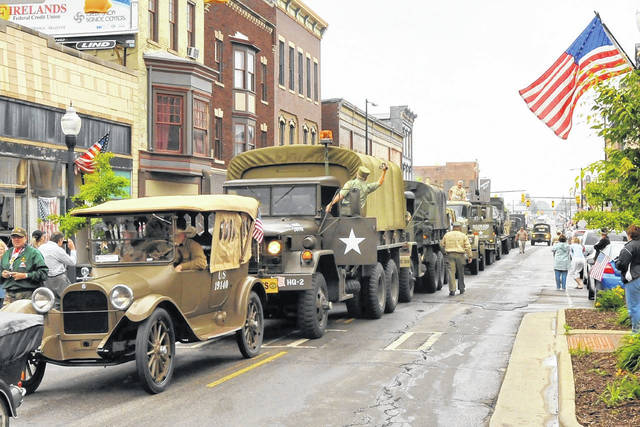Editor’s note: On Thursday, August 22, 2019, the U. S. Army will replicate a 1919 transcontinental convoy along the Lincoln Highway. It likely will pass through Morrison, IL, between noon and 1:00 p.m. en route to Clinton, IA. The Military Vehicle Preservation Association (MVPA) will traverse the same route, from Washington, D.C. to San Francisco, CA, taken in the summer of 1919. It will overnight in Iowa: DeWitt (on the 22nd), Marshalltown (23rd), and Denison (24th.) The MVPA calls their convoy the “longest Veteran’s parade in the Nation.”

The following material by Janice Gammon was published Thursday, May 23, 2019.
Henry Ostermann had been piloting convoys for the Army up and down the East Coast in the winter of 1917, during World War I. He was also serving as Field Secretary for the Lincoln Highway Association (LHA) and merged his two occupations into one idea for the convoy. America was shown how motor trucks could transport troops, supplies, arms, and ammunition across the Nation. This was known as the First Trans-Continental Motor Transport Convoy. According to the State Center[, IA,) Enterprise, the vehicles stretched out for as much as 10 miles.
The LHA officers and the General Staff in Washington, D. C. held a conference…to discuss convoy details. The…LHA suppl[ied] accurate data to the Army, as a “result of its years of study of trans-continental highway conditions….”

A young Lt. Col. Dwight Eisenhower was one of the men on this trip. He caught up with the convoy at the first overnight location, in Frederick, MD, [and] wrote about his experience. His report is on file at his Presidential Library and Museum in Abilene, KS: https://www.eisenhower.archives.gov. Eisenhower found most of the drivers in need of additional training and, as with the rest of the convoy leaders, felt the Nation’s roads to be lacking.
- In the Eastern United States, they were often paved but sometimes too narrow for the large equipment.
- West of Chicago, IL, roads became graveled.
- The ground in Iowa was very dry; vehicles were kicking up quite a bit of dust and hindering the men and trucks following them.
- Nearly 100 bridges were broken and repaired across the Nation.

This experience showed that America needed to improve roads….The Federal Government needed to step in with funding, instead of leaving it to the locals and Counties to build their own roads….County Secondary Road Departments, County Engineers, a Federal Highway Commission, and the Department of Transportation [eventually were] developed to address [America’s need to follow the road.]
